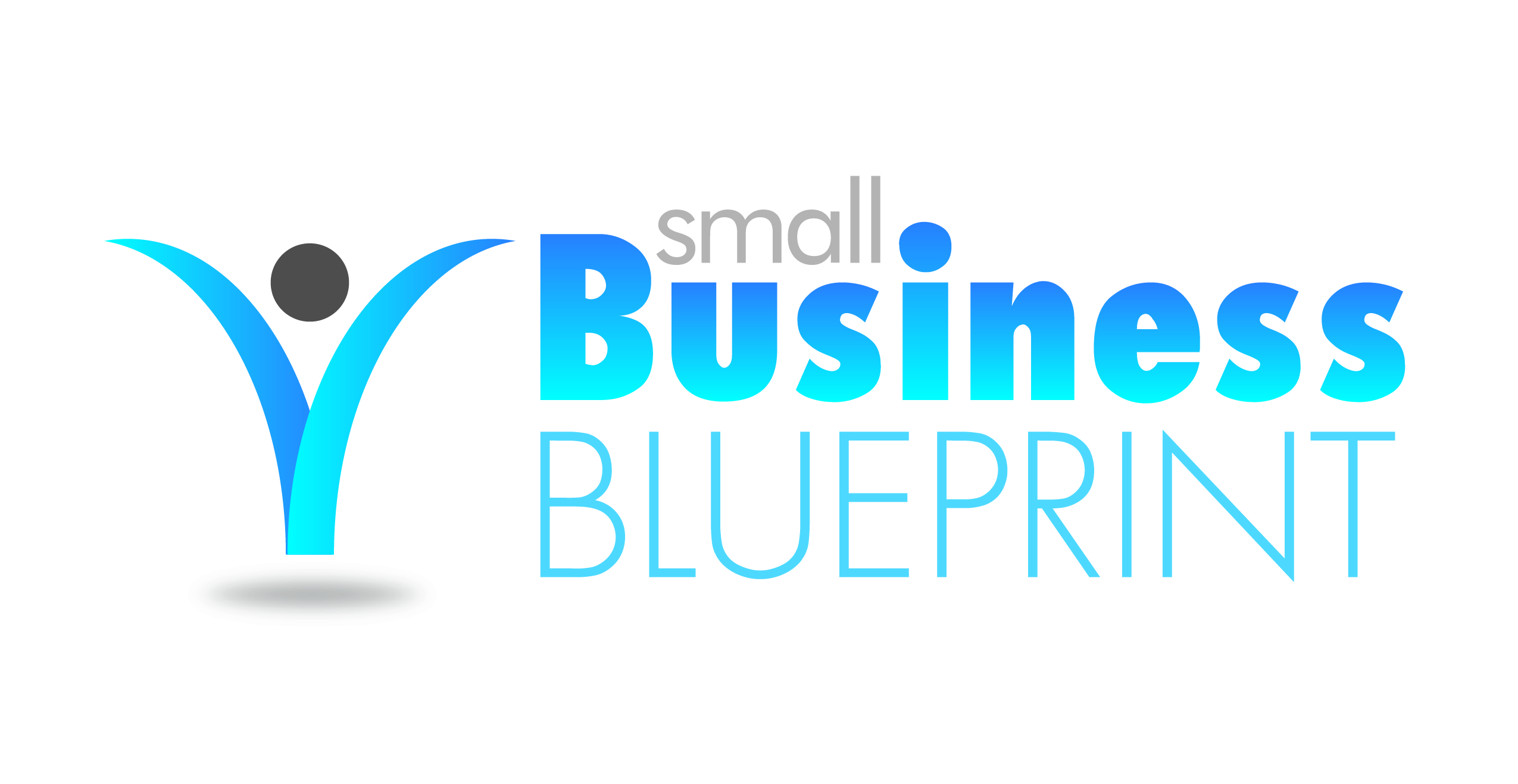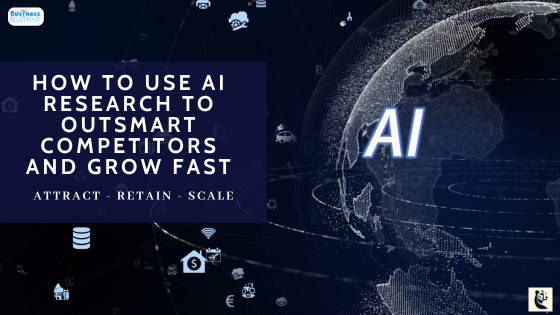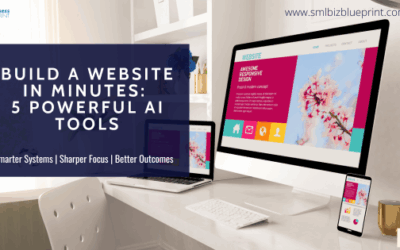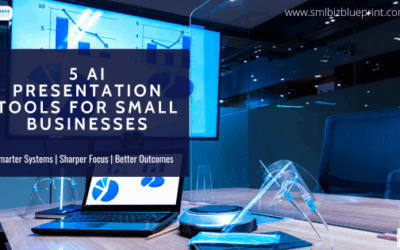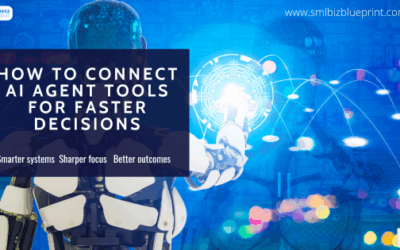Are you making decisions based on gut instinct or real insight?
Most small business owners don’t lack ideas. They lack clarity. There’s never enough time to research competitors, study customers, or map out new strategies.
So, marketing gets reactive. Offers fall flat. And opportunities slip by unnoticed.
But here’s the truth: you don’t need a research team—you need more innovative tools.
AI has quietly levelled the playing field. What once took weeks—audits, trend analysis, customer persona development—can now be done in hours.
The problem?
Most businesses still aren’t using AI to ask the right questions.
In this guide, we’ll break down 5 high-impact research projects that every small business should run using AI right now.
From tracking competitors in real time to uncovering SEO goldmines, these projects are fast, repeatable, and designed to give you an edge, without overwhelming your schedule.
Whether you’re a solo founder or running a lean team, these AI-powered workflows will help you move faster, market smarter, and stay two steps ahead.

#1 Track Your Rivals in Real Time with AI-Powered Competitor Deep Dives
Staying ahead in your market starts with knowing what your competitors are doing—every week, not every quarter.
Small businesses can no longer afford to guess what competitors are charging, how they’re positioning themselves, or what offers they’re pushing. And yet, most business owners still rely on sporadic reviews or outdated assumptions.
With AI, you can monitor changes to competitor websites, ads, SEO rankings, email campaigns, and social posts in a fraction of the time it used to take.
AI tools let you automate the tracking, summarising, and analysis of your competitors’ entire digital footprint.
Using platforms like Perplexity, ChatGPT with browsing, or Browse AI, you can scrape the latest content from multiple competitor sources—landing pages, product listings, blog articles, newsletters, and even Instagram captions. From there, AI can summarise trends, compare offers, and flag key shifts in tone, pricing, or targeting.
They thought they had the best-priced offer in the market—until two key clients suddenly dropped out mid-quarter. Only later did the team realise a competitor had quietly rolled out a similar service at 15% less, bundled with a bonus add-on. No one had noticed. No alerts. No heads-up. Just a missed opportunity and lost momentum.
AI could have flagged that shift the moment it went live—giving them time to respond before the revenue walked away.
For example, you might ask:
“Summarise this competitor’s email campaign. What product are they pushing, and how are they framing the offer?”
Within minutes, you’ll have a concise breakdown of their strategy, without manually reading every post.
Regular AI-powered audits reveal pricing shifts, positioning moves, and content gaps—before your competitors gain ground.
Let’s say a competitor quietly starts promoting a new bundle offer with a 10% discount on subscriptions. If you catch it early, you can counter strategically by differentiating your value proposition, launching your test offer, or adjusting messaging to target the same buyer.
A small agency we worked with used ChatGPT to review their three largest competitors’ pricing pages weekly. They discovered one was now offering a “pay-per-lead” plan—a change that explained recent client churn.
With this insight, they added a hybrid pricing tier and won back lost accounts.
AI tools also let you track SEO and ad shifts that signal a pivot in their growth strategy.
Platforms like SurferSEO, Ahrefs, or even Claude can compare what keywords your competitors are ranking for now versus last month.
If they suddenly start optimising for new high-intent terms like “AI productivity tools for coaches,” that’s a cue—they’re shifting focus or expanding their product set.
This insight helps you respond early rather than playing catch-up after market share has already been lost.
Pro Tip:
Set up an automated weekly scrape of your top 3 competitors using Browse AI or Zapier + ChatGPT. Feed the results into a prompt like:
“Summarise key changes across these three competitor websites over the past 7 days. Highlight any new offers, shifts in messaging, or pricing updates.”
This ritual gives you consistent visibility, without consuming your time.
Ready to level up your business?
Sign up for our newsletter and get expert tips delivered weekly.
#2 Build Laser-Focused Customer Personas Using Real-World Data
Generic buyer personas are costing you leads—AI helps you build data-driven profiles that convert.
Most small businesses rely on surface-level demographics like age, job title, or location to build customer personas. But buyers don’t make decisions based on age—they buy based on needs, fears, objections, and urgency.
AI gives you the power to dig into public conversations, real customer feedback, and live sentiment to build accurate, behaviour-based profiles fast.
AI tools can scan thousands of reviews, forum posts, and social threads to reveal what your buyers care about.
Using ChatGPT, Claude, or custom scraping tools, you can analyse Amazon reviews, Reddit discussions, Quora questions, and feedback from your own CRM or surveys.
These sources expose your customers’ language, objections, and hidden pain points, which marketing teams often overlook.
The marketing team had been targeting “growth-focused founders”—but conversion rates were tanking. When they ran AI analysis on product reviews and support chats, a new pattern emerged: their best customers weren’t founders—they were operations managers desperate for tools that “just worked.” One 30-minute AI audit flipped their entire messaging strategy—and leads finally started converting.
Sometimes, you don’t need more traffic. You just need to talk to the right person.
Example prompt:
“Summarise the top 10 frustrations mentioned by small business owners when using AI tools. Group by emotional trigger and urgency.”
This not only gives you persona data—it gives you messaging direction.
High-performing personas go beyond demographics to segment buyers by motivation, awareness, and readiness to buy.
One of the most powerful uses of AI is clustering buyers into groups like:
“Solution-aware but sceptical”
“Budget-sensitive early adopters”
“Repeat buyers looking for upgrades”
Each group requires different messaging, content, and offers.
A fitness brand, for example, discovered that “pain relief” language outperformed “mobility” by 38% in emails—because AI revealed the core buying motivation was pain avoidance, not performance.
With AI, you can even refine persona language to match your customer’s voice, making your marketing feel like a conversation, not a pitch.
After analysing 500+ online reviews, an AI summary may show your customers repeatedly say things like: “I just wanted something simple that worked” or “I was overwhelmed by all the options.”
That exact language should show up in your headlines, ad copy, and product pages.
This is how AI turns raw data into brand resonance.
Pro Tip:
Use this prompt weekly in ChatGPT or Claude:
“Analyse 100 customer reviews and summarise the top buying objections, emotional triggers, and recurring phrases. Group into 3 persona types by urgency and motivation.”
Refining your personas isn’t a one-time project—it’s a continuous competitive edge.

#3 Find Hidden SEO Opportunities Your Competitors Are Missing
The fastest way to drive organic traffic isn’t more content—it’s smarter content based on untapped SEO opportunities.
Most small businesses focus on obvious, high-competition keywords—then wonder why their blog posts never rank. But with AI, you can uncover long-tail, high-intent keywords your competitors aren’t targeting yet.
These SEO “gaps” are often more profitable, easier to rank for, and better aligned with what your ideal buyers are searching.
AI tools can surface low-competition, high-conversion keywords in minutes, not weeks.
Platforms like LowFruits, SurferSEO, and Claude can analyse thousands of search terms and filter them by keyword difficulty, intent, and SERP gaps.
You can instantly find blog topics and page ideas that require less effort to rank, yet deliver more targeted traffic.
Example prompt:
“Find 15 low-competition long-tail keywords for AI tools for small businesses. Sort by buying intent and suggest a blog title for each.”
In one pass, you get a content strategy roadmap with SEO built in.
AI doesn’t just find keywords—it organizes them into themes that facilitate content clusters and internal linking.
Let’s say you run a productivity tool. AI might group keywords like:
“best AI tools for time management”
“AI for solopreneurs”
“automate client follow-ups with AI”
Now you’re not just writing random blog posts—you’re building a content ecosystem that increases session time, authority, and rankability.
Grouping content by intent also improves how search engines perceive your topical authority.
Long-tail SEO + AI-driven blog outlines = faster ranking and higher conversion.
Once you’ve identified keywords, AI can instantly generate SEO-optimised outlines. These outlines often include headings with embedded keywords, question-based subtopics (for featured snippets), and suggested meta descriptions.
This allows you to go from keyword to publish-ready outline in less than 15 minutes, eliminating the bottleneck that stops most small business content plans before they start.
Pro Tip:
Prompt idea for SurferSEO or ChatGPT:
“Suggest 10 long-tail, commercial-intent keywords for [your niche]. For each, provide a blog post title, meta description, and H2 outline that targets SEO.”
This creates a month’s worth of SEO-optimised content in one session.
Don’t miss a beat in your business growth journey!
Join Pulse and stay ahead with expert tips and actionable advice every month.”
Subscribe to Pulse Today
#4 Reverse-Engineer the Best Offers and Funnels in Your Market
You don’t need to reinvent the wheel—AI can dissect the highest-converting offers in your niche in minutes.
Small business owners often build funnels based on intuition or outdated templates. But top-performing funnels follow consistent patterns—compelling hooks, clear CTAs, strategic pricing, and emotional triggers.
AI tools let you analyse, compare, and replicate these patterns across ads, landing pages, email sequences, and sales videos—without guessing.
Use AI to deconstruct your competitors’ funnels step-by-step—then benchmark your own.
Platforms like ChatGPT, Claude, and browser-integrated scrapers can extract the full architecture of a competitor’s funnel: from their lead magnet to tripwire offer, upsells, scarcity elements, and CTA language.
You can then compare what’s working and where your own offer might be underperforming.
The funnel looked fine on paper: lead magnet, email sequence, webinar, offer. But conversions were stuck below 2%. A quick AI teardown of competing webinars revealed what was missing—urgency, proof, and a bold offer frame. Within days, they rebuilt the landing page using real-world examples and restructured the pitch.
Same product, same audience—now with a 3.7x bump in sign-ups and a funnel that actually pulls its weight.
Example prompt:
“Analyse the landing page at [URL]. What’s the hook, offer structure, price point, urgency element, and CTA format?”
This gives you a cheat sheet for what to improve in your own funnel—fast.
AI reveals hidden psychological levers used in high-performing offers.
Beyond structure, AI tools can detect emotional cues, FOMO triggers, and framing devices.
For instance, if most of your competitors use urgency language like “only 48 hours left” or “limited spots available”, and your offer says “join anytime,” you’re already at a disadvantage. AI helps you spot what’s resonating in the market, then helps you integrate it into your own copy.
Reverse-engineering your competitors’ marketing isn’t theft—it’s market intelligence.
Top brands constantly study each other. The difference now is that AI lets you do it better, faster, and more thoroughly—without needing to buy every product or sign up for every funnel.
And once you’ve mapped the landscape, you can intentionally differentiate your offer while borrowing what’s proven to work.
Pro Tip:
Weekly Funnel Audit Prompt:
“Summarise the offer stack from this competitor’s sales funnel (URL). Include the hook, price anchors, CTA wording, urgency tactics, and bonus structure. Suggest 3 improvements we could apply to our own.”
Use this prompt to audit one funnel each week and refine your offer in real time.
#5 Decode Customer Feedback to Refine Your Products and Messaging
Customer feedback is the blueprint for better products, smarter messaging, and higher retention—AI helps you decode it faster.
Most businesses collect reviews, support tickets, and surveys, but never fully leverage the goldmine of insights within them. With AI, you can analyse hundreds (or thousands) of data points to spot recurring praise, pinpoint pain points, and uncover unmet needs.
This transforms vague sentiment into concrete decisions about product improvement, copywriting, and customer experience.
AI tools can analyse reviews, emails, chats, and survey responses to uncover trends in minutes, not weeks.
Tools like ChatGPT, Claude, or MonkeyLearn can scan vast volumes of feedback and deliver structured summaries.
You can ask them to categorise sentiments (positive, neutral, negative), extract feature mentions, and group issues by severity or frequency. This kind of analysis used to require a data team—now it takes a few prompts.
Prompt example:
“Analyse the last 100 product reviews and categorise them into recurring themes. Identify which features are praised, what’s missing, and what causes frustration.”
The output might highlight that users love your product’s ease of use but consistently complain about limited integrations.
That’s an immediate product development opportunity—and a messaging angle you can reinforce.
Comparing your feedback to competitors’ gives you a positioning edge.
AI lets you apply the same analysis to competitor reviews. If your audience praises your customer service while competitors receive complaints, that becomes a clear differentiator to highlight on your homepage, emails, and ads.
On the flip side, if customers are raving about a competitor’s feature you don’t yet offer, it may signal where you’re falling behind.
AI lets you speak your customer’s language—and that leads to stronger engagement and conversion.
Beyond product development, AI-powered feedback analysis gives you access to the exact phrases customers use when describing your product. This real-world language is a goldmine for writing relatable and authentic headlines, email subject lines, and ad copy.
If your customers say things like “finally something that just works” or “made me feel in control again,” those aren’t just compliments—they’re conversion copy.
Pro Tip:
Run this AI prompt monthly:
“Analyse all new reviews, tickets, and surveys from this month. What are the top 3 praised features, top 3 complaints, and the most commonly used customer phrases?”
Use this to fuel your product roadmap, sales messaging, and customer retention strategies.
Conclusion
The gap between successful businesses and struggling ones often comes down to one thing: how fast they learn and adapt. With AI, you no longer need weeks of manual research or expensive consultants to gain strategic insights.
You can unlock real, actionable intelligence in just a few hours each week.
Here’s a quick recap of the 5 AI-powered research projects every small business should start this week:
- Competitor Deep Dives – Monitor shifts in pricing, messaging, and offers with real-time AI summaries.
- Customer Persona Building – Create behaviour-driven personas using live customer language and feedback.
- SEO Opportunity Mapping – Find long-tail keywords and create smarter content strategies using AI tools.
- Offer & Funnel Analysis – Reverse-engineer top-performing funnels and optimise your own for better conversions.
- Customer Feedback Analysis – Turn reviews, support tickets, and surveys into product and messaging improvements.
You don’t need more time—you need better inputs. These AI workflows are fast, repeatable, and designed to give you an unfair advantage in your market.
Start with just one project this week.
Choose the area where you’re most in the dark—competitor offers, SEO strategy, or buyer motivations—and run one of the AI prompts we’ve included.
Then build your own 2-hour AI research ritual around it.
Action Steps
- Choose One Research Area to Focus On This Week
Pick the area where you currently feel the most blind: is it your competitors, your customer personas, SEO opportunities, offer performance, or product feedback? Focus beats overwhelm. - Run One AI Prompt Using ChatGPT or Claude
Use a targeted prompt from the AI Research Prompt Library (e.g., “Summarize the pricing, tone, and offer of Competitor A”). Run it manually first to test quality. - Document Your Key Insight in the Weekly Tracker
Write down what you discovered and what decision it influences—marketing copy, new product ideas, SEO focus, or funnel tweaks. - Assign a Clear Next Action Based on That Insight
Don’t let the insight sit idle. Add a small task to your to-do list: update a landing page, test a CTA, rewrite one email, or shift your ad copy. - Schedule a Weekly 2-Hour AI Research Block
Reserve one hour for running prompts and one hour for synthesis and action. To keep momentum going, do it on Monday mornings or Friday afternoons. - Refine and Rotate: Tackle 2–3 Areas Each Month
Once your workflow is set, rotate through all five research types monthly. Over time, you’ll build a live dashboard of strategic intelligence that compounds.
FAQs
Q1: What are AI-powered research projects for small businesses?
A1: AI-powered research projects use artificial intelligence tools to automate competitive analysis, customer insights, SEO planning, offer testing, and feedback reviews—helping small businesses make smarter decisions faster.
Q2: Why should small business owners invest time in AI-driven research?
A2: Because traditional research is slow and resource-intensive. AI compresses hours of work into minutes, delivering insights on competitors, customers, and marketing opportunities that most small businesses would otherwise miss.
Q3: Which AI tools are best for running these research projects?
A3: Popular tools include ChatGPT, Claude, Perplexity, Browse AI, SurferSEO, and LowFruits. Each serves a specific purpose—content analysis, SEO planning, funnel breakdowns, or sentiment tracking.
Q4: How often should I run these research workflows?
A4: We recommend dedicating 2 hours per week: 1 hour to run AI prompts across 1–2 research areas and 1 hour to apply insights. Over time, rotate through all 5 projects for a complete intelligence system.
Q5: Can I use these AI prompts without technical skills?
A5: Yes. Most prompts are copy-and-paste ready and require no coding or advanced setup. If you’re using ChatGPT or Claude, you simply type the prompt and let the AI return a structured summary or recommendation.
Q6: What kind of results can I expect from this process?
A6: Businesses that use AI for strategic research often see improvements in marketing performance, conversion rates, SEO traffic, and customer satisfaction, because their decisions are data-informed, not reactive.
Q7: How do I track and apply insights from these AI research projects?
A7: Use a simple Weekly Insight Tracker to log what you’ve discovered, what action you’ll take, and who owns the next step. This keeps AI insights aligned with real business outcomes.
Other Articles
Scale Smarter: AI Blueprint for Small Business Growth
